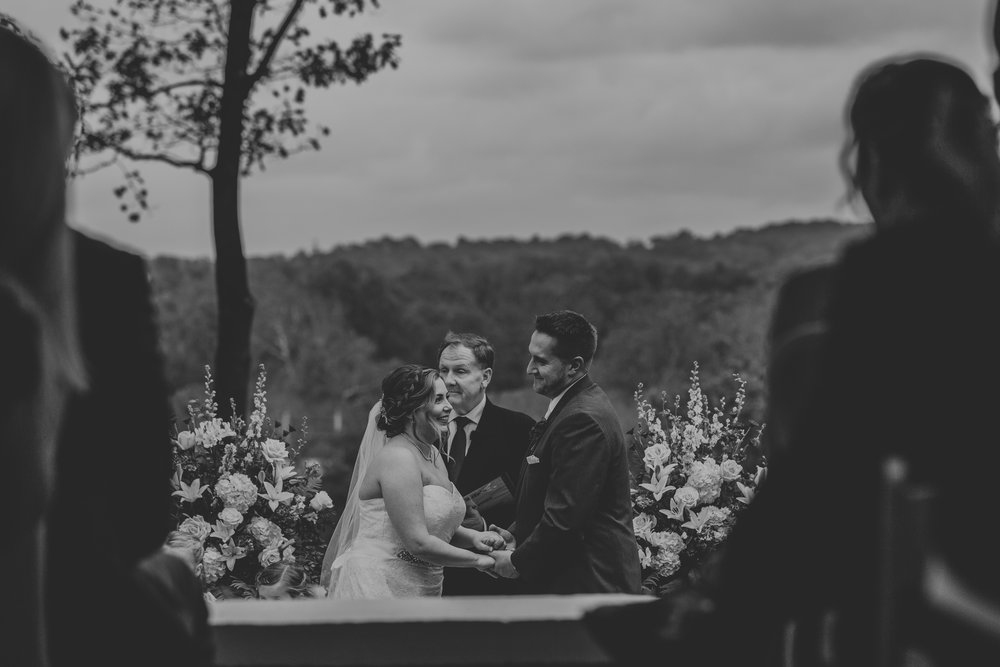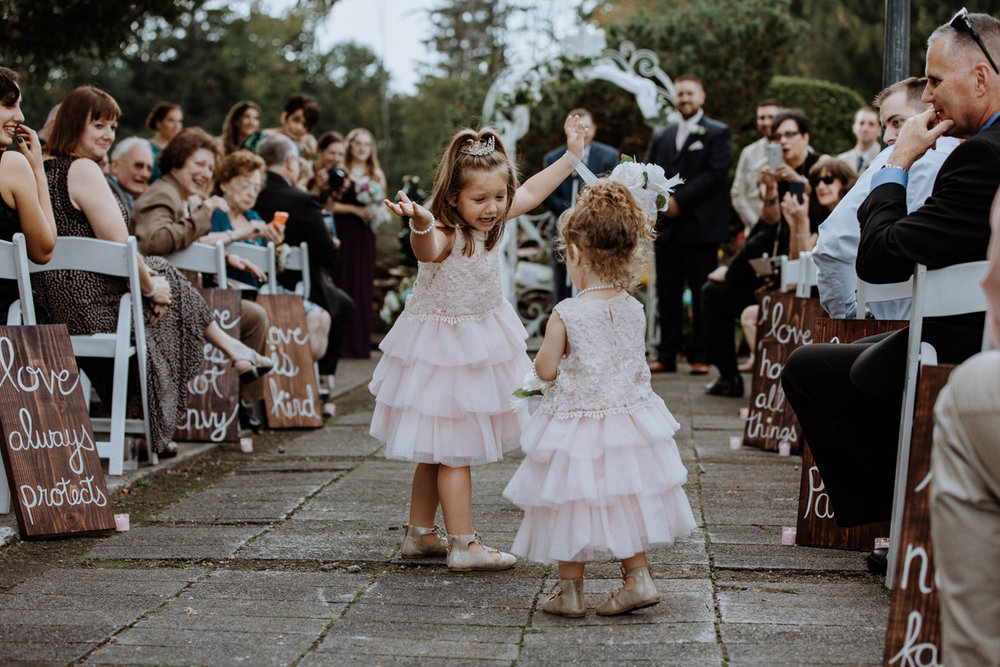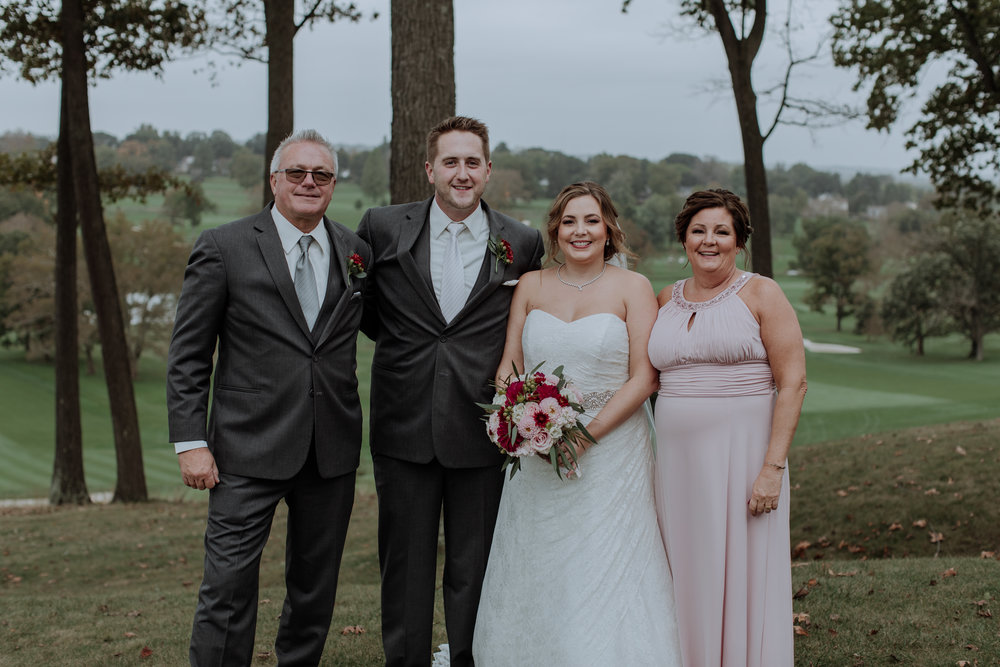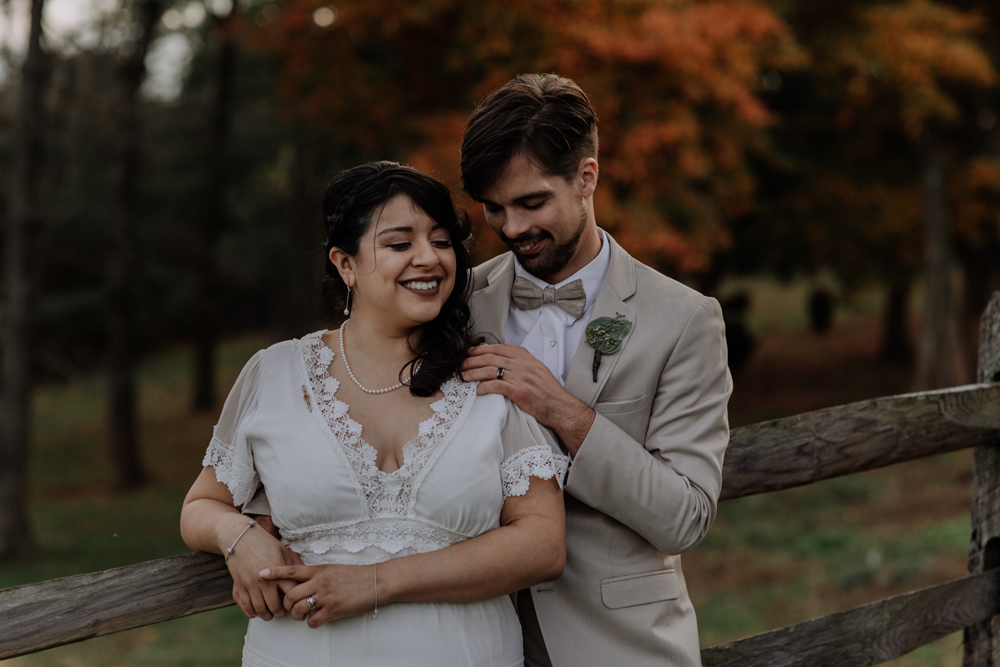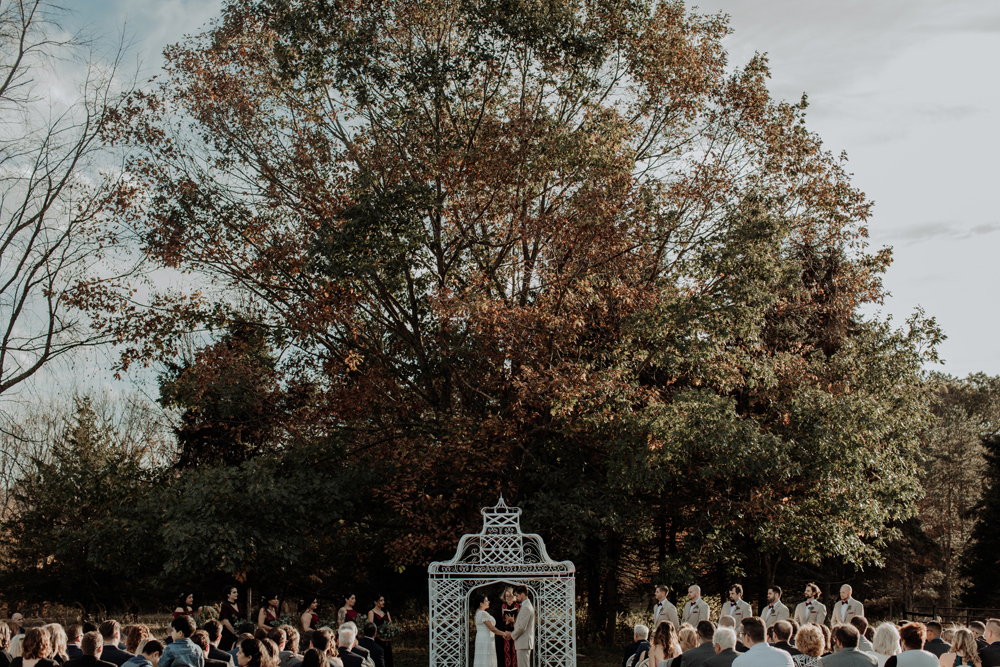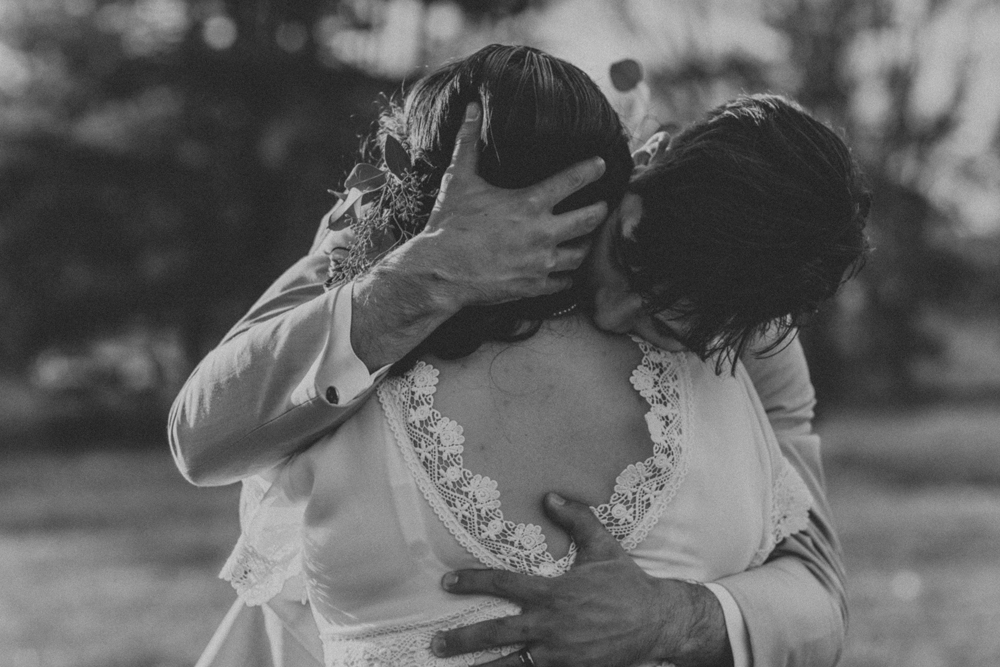Having the perfect camera lenses to suit your photography style and budget is essential to any wedding photography business.
When we started our photography business, one of our first courses of action was to update our camera gear.
Keep in mind, we use Canon camera bodies and lenses, so our suggestions will reflect this brand – though their are always comparable lenses with other brand names like Nikon, Sony, and Olympus – so some of the info provided may be useful if you just search your brand name plus the focal length and aperture number.
When photography is just a hobby that you do for yourself, it is easy to get away without the latest-and-greatest pieces of expensive equipment; however when you begin to do photography professionally, the value is seen pretty quickly when you begin to invest in higher costing, but better quality, gear. This is especially true when it comes to camera lenses (or “glass”).
Before we go on, don’t get us wrong – having the most expensive equipment on the block will not make you a good photographer, and some photographers can get by just fine with budget lenses if it suits their style and target audience. However, since upgrading our lenses, we have seen a stark contrast between the old budget lenses we once used, and the newer, more expensive pieces we now use.
In general, the differences that we notice are seen in the following:
- image quality (sharpness of the images)
- color (higher end lenses often have more color depth)
- compression quality (higher end and longer focal length lenses output more beautiful bokeh)
- durability (better build quality)
- performance in low light (lower f/stop numbers allow more light to reach the camera sensor)
As with most things, you get what you pay for.
Assuming you are looking to invest in some new camera lenses for your wedding photography business, the ones we list below are all lenses we utilize and can swear by to provide you with the best bang for your buck. In some instances, we will make note of good “budget” alternatives as well.
Please note, all lenses below link out to Amazon where you can read additional information, check prices, and read user reviews. If you make a purchase through these links, we do receive a small commission per sale. This is an excellent way to support our photography endeavors if you find this to be a useful resource for finding the best lenses for wedding photography.
5 Canon Lenses You Should Buy for Photographing Weddings
Throughout this section, we will be listing several Canon camera lenses that we always have on our cameras or in our camera bags during the wedding day. Though difficult to do, we have listed these in the order of most importance to us.
1. Canon EF 70-200mm f/2.8L IS II USM Telephoto Zoom Lens
If there is any essential wedding photography lens, the 70-200mm is one of them. If you have wondered how to capture a ceremony without feeling the need to be right in front of the bride + groom (and in every guest’s line of sight), this lens is an excellent solution.
This lens has really allowed us to start becoming much more incognito in our photography, and capture moments closely without actually being close to the subject. Of course, when shooting at 70mm, it can still have some function for the moments when you do get a little closer as well. This ability to easily control the zoom of the lens really adds a substantial benefit. Outside of the ceremony, it also makes a great tool for capturing guests during cocktail hour and the reception without catching them off guard; instead allowing you to stay back a bit more, and get a lot more candid moments.
From a technical lens (no pun intended), this 70-200mm lens outputs really beautiful images.
The compression at this focal length and ability to shoot at f/2.8 makes it really powerful for in-the-moment portraiture, too. The built in image stabilization also works very well to help compensate for any camera shake, which may well result from a lot of use as it is quite heavy and bulky (the only downside we have really observed with this lens). Like most things, you get used to it, but it is worth noting that – while useful – you may not want to shoot an entire wedding with it.
2. Canon EF 50mm f/1.2 L USM Lens
The 50mm focal length is one of the most human focal lengths.
It may seem pretty bizarre to read that, but it is true that 50mm is the focal length closest to how the human eye sees the world. It makes sense then that this lens has become such a staple to our style of photography, which aims to effectively document the wedding day with a keen eye for detail and the human elements of the day.
If anything, the 50mm lens provides a lot of flexibility, and can be used to take photos in a lot of different situations and to different artistic ends.
We usually have one of these 50mm lenses on one of our cameras at all times during the wedding day, because it is so flexible and easy to utilize. The main appeal is that it can be used from a moderate distance from the subject, and can be used to get tight shots as well as overview shots (depending on the look you are going for) with no noticeable lens contortions that may be noticed at wider focal lengths.
In the context of weddings, we have used this to photograph literally every part of the day in some way or another – so this will have you covered for family formals, portraits, ceremony, and reception photos. We even utilized it to take a long exposure night photographs of an outdoor wedding venue.
While the quality difference over the budget equivalent is highly noticeable, we do still keep the Canon EF 50mm f/1.4 USM Standard & Medium Telephoto Lens (which is available for a fraction of the cost) in our camera bag as a back up 50mm, and for certain situations where we may artistically desire a lens that produces a softer image quality. If you are looking for a 50mm, but don’t quite have the budget to accommodate purchasing the expensive model, this may suit your needs quite well.
3. Canon EF 85mm f1.2L II USM Lens
After purchasing this 85mm lens, we instantly fell in love.
This is really the perfect lens for shooting portraits. The low f-stop allows for the maximum depth of field, so you can isolate your couple in the frame and blur to oblivion the background if you want. The compression and outputted bokeh is beautiful. While maybe not as essential as the earlier 2 lenses, it becomes more valuable as you seek to separate your work as a wedding photographer from the work of others just joining the industry.
As you might notice, the actual 85mm focal length is incorporated into the 70-200mm lens, however this particular lens really specializes in providing even higher quality. As one of the red ringed Canon prime lenses, it’s specific purpose in the context of wedding photography is really for portraiture, but it may also be suitable to snapping candid reception photos from a distance as well if you are not handling a zoom lens, or would prefer a prime lens instead.
4. Canon EF 24mm f/1.4L II USM Wide Angle Lens
With every lens that you purchase for your wedding photography business, there should be a fundamental purpose as to why you want to own a certain lens – otherwise you just end up spending a lot of money to have photography gear go unused and collecting dust.
We have been using this prime 24mm lens for a few years now, and it is an essential in our backpack. A wide angle lens is perfect for capturing pictures of “the environment” of the wedding. We always try to take landscape shots of the venues we shoot at, as it helps to tell the story of the wedding day by showing the viewer where it took place – a decision likely not made lightly by the bride + groom! A wide angle lens helps to do this effectively without having to find a spot to stand a mile away.
We also use this lens in other, less common, applications because we like the look it gives off. It can also be great for shooting large bridal parties, or in tight spaces where you want more breathing room in a shot. In many ways, this is a real artistic lens that has practical applications. Also, this lens is very crisp!
The only “downside” (if you could call it that, as it’s the nature of wide angle lenses) is that the image will show some contortion – so in the case of shooting people, it’s important not to have anyone standing too close to the sides of the lens, otherwise their body will be elongated – unless this is your intention.
In post-processing in Lightroom, it is possible to correct this to some extent by toggling the Profile Correction.
If you want to read more about our photo editing process with the Loupedeck, check out Our Guide to Using the Loupedeck Lightroom Controller.
The last lens is not nearly as essential as the ones that come before it – especially if you already own the 85mm or 70-200mm lenses already discussed here – but for us, it cannot be ignored because it offers something specific of value in the context of our wedding photography business.
This was our first lower aperture and longer focal length lens, and the result from taking photos with it was immediately apparent as it helped influence our style. As with other prime lenses with these attributes, the clarity, image quality, and compression is difficult to replicate.
As we are a photography team, this lens finds the most use in the hands of Chris (who generally take a quieter, more behind-the-scenes approach to the photos he captures) who will utilize it to find different perspectives of the couple (often used during wedding day portraits and engagement sessions). It also allows us to create some space from one another as photographers as well, as Jes might be up closer using a 50mm, while Chris hangs back and finds another viewpoint farther away – but still capturing close detail as needed. This specific context may not apply to all people, but for those bringing along a second shooter, it may be worth keeping in your back pocket as another option.
Lastly, given the longer focal length of the 135mm, you may also find it useful for taking portraits when the couple you are working with is far more reserved and camera shy, as it will allow you to create more space from the couple so they can more naturally do their own thing without feeling like they are being watched as closely.
As wedding photographers, it is critically important to select camera lenses that will benefit the task at hand well, with style, and provide an ability to be ready to capture all of those unexpected moments that pop up during the wedding day. Knowing how your lenses work into this process will make the world much easier, and allow you to help tell a beautiful story with images that your client’s (and their family + friends) will love for the time to come.
While there are workarounds if you are budget conscious in some instances, if you are serious about shooting weddings as a profession, having the right gear in your bag is significantly important.
In our minds, as we looked at some of the high price tags that come along with these, it became apparent that we were truly making investments into our photography – in the art form, in our business, and in the quality of the service we are providing to our clients.
With camera lenses like the one’s above that we use and highly recommend, you can really begin to create photographs that substantially stand out when compared with everyone’s iPhone photo from the same wedding!
Want support growing a photography business?
Shoot and Thrive’s Photography Business Academy is a significant resource that we had a role in creating (along with some other photographers) and includes a comprehensive course library, VIP community, and additional levels of support from our team to help you create the business of your dreams – whether you’re a complete beginner or experienced and needing help growing.
In The Photography Business Academy, you will learn in great detail all aspects of business including branding, marketing, sales, client experience, systematization of it all – and be provided with resources (the full academy includes over 200+ worksheets, email templates, and other supporting resources to make your life easier). The end goal is to not just provide you information, but tools to actually transform your business (and your life).
